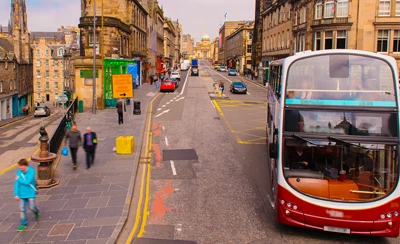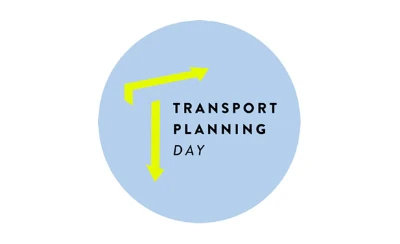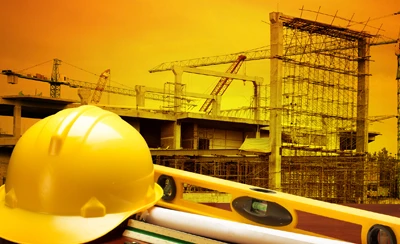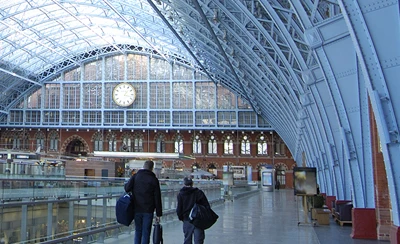London, like most global cities, has seen an unprecedented increase in the past five years of on-demand food delivery services.
The Takeaway Economy Report in 2017 revealed London as the UK’s takeaway capital, with an impressive £1.4 billion spent on takeaways in 2016 alone. This translates to an average household takeaway expenditure of £36 per month. The report anticipates that the UK’s market is expected to continue its high growth trajectory, increasing in value from £9.9 billion in 2016 to £11.2 billion by 2021.
However, while the market’s growth is widely reported, the means of how these deliveries are fulfilled in London is underreported and poorly understood. The only body of research that sought to quantify how these journeys were being made in London was conducted by Transport for London in 2007, highlighting that powered-two-wheelers (P2W’s) were the dominant mode accounting for 92% of journeys.
While this information is useful, it is difficult to understand an accurate picture of how these journeys are made, as since 2013 a new business model of food delivery emerged.
The emergence of new delivery players such as Deliveroo in the early 2010s altered the industry. They were unlike traditional food delivery companies such as Just Eat, who simply gave consumers the option of different menus and facilitated the transfer of orders. The new businesses not only did this, but they provided their own logistics network to carry out the delivery of these goods.
Due to the size of P2W’s, their harmful environmental impacts often go unnoticed. With the anticipated growth in the market, indicative modal share from previous research and the surprising amount of CO2 emissions a moped emits, now is the time for practitioners to give this issue some food for thought if we want to limit their contribution to the climate crisis.
How do riders travel and what influences their behaviour?
The majority of these journeys were found to be delivered by P2W’s (52%), followed by bicycles at 35%.
A range of factors influenced this outcome. These ranged from prevailing transport norms, a rider’s current employment status and the subsequent travel benefits they have, or lack access to, down to practical considerations such as the affordability and distance range of vehicles.
The most striking finding of the study is that reports suggest Deliveroo has been actively prioritising motors over muscles since July 2019, with the introduction of what is termed ‘vehicle priority’. According to reports, vehicle priority is a new consideration that Deliveroo’s algorithm FRANK takes into consideration when allocating rider’s shifts. This ultimately deems motorised transport such as cars and P2W’s more efficient than bicycles resulting in users of these vehicles gaining first choice, leaving cyclists to last. This is seen to have a two-fold detrimental effect, with 18% of rider’s who cycle now considering switching to a moped, highlighting the importance of companies’ actions in swaying a rider’s transport choice.
In several previous articles, Deliveroo had been approached to comment on this, and issued the following statement:
“We have made a small change to our online booking portal which will mean that as we create more work across the UK, we will have enough vehicles capable of making longer distance orders that customers want. Deliveroo isn’t saying goodbye to pedal power, quite the opposite in fact and will also continue to roll our measure such subsidised e-bike schemes.”
Recommendations
A series of recommendations that operators and practitioners from local to central government can enact to encourage these journeys to be switched from motors to muscles are put forward.
These range from partnership capacity building between the local and private sector, linking riders up with free cycle training to build up confidence, to the adoption of new policies such as the implementation of an eco-tax where consumers are charged extra for more polluting vehicles. A similar tax has been previously adopted by Uber, the sister company of Uber Eats, for all journeys made in London, charging 15p per mile. This could be a real possibility to help push both riders and consumers to think about their choices.
In a similar vein, local government has the power to redefine how they want to see their streets used. This could be anything from tightening existing planning procedures to ensure that cycle parking is prioritised over motorcycle bays outside takeaway hotspots, to implementing infrastructure such as segregated cycle lanes to grow confidence and improve the perception of the safety of cycling in the city.
Another fundamental recommendation is for central government to ensure all riders have unrestricted access to jobs, regardless of their transport mode. The uncertainty of a rider’s employment status influences whether they have autonomy in their transport choice. The vehicle prioritisation that Deliveroo has reportedly shown restricts and controls which riders are allocated jobs, favouring those in motorised, unsustainable transport choices. This ultimately treats riders more like employees than contractors. Central government intervention is needed here to settle the debate and either correctly reassign riders’ employment status, or mandate companies to follow through with allowing riders to choose their own modal choice without being discriminated against. Adopting a policy like so would act as a catalyst for change.
About the author
Georgia is a Transport Planner at Ealing Council where she encourages and promotes sustainable and active transport. Georgia has experience working on a broad range of local authority projects, ranging from leading West London’s first bi-borough cycling festival to heading up the behaviour change programme of the borough’s Liveable Neighbourhood scheme. Before joining Ealing, she worked as a Consultant on a variety of UK and international public sector projects including advising on accessibility and inclusion considerations for the proposed Oxford Street Transformation. All views in this article are Georgia’s own.








